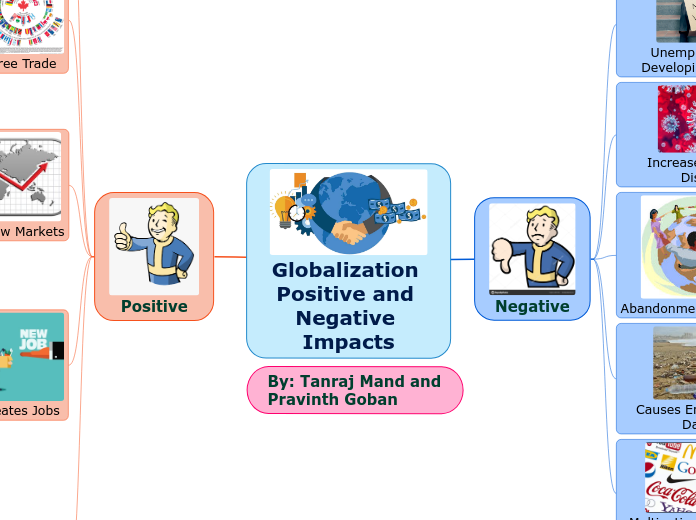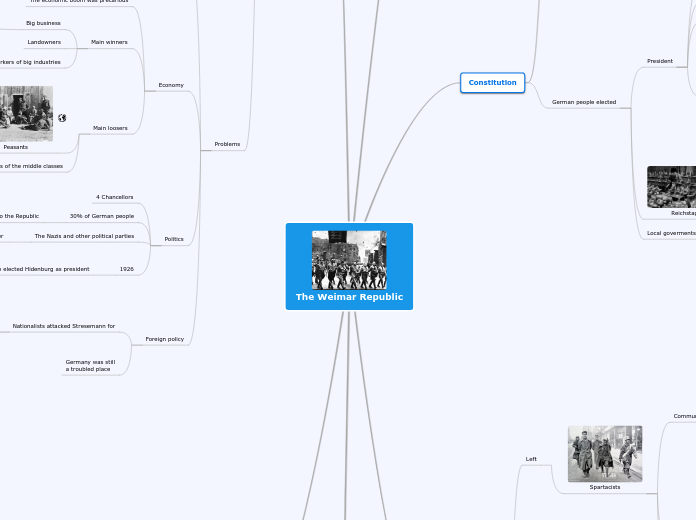Chapter 4 Summary
4.6) The macro-environment
The international environment
businesses in the international environment have a complex operation as each country has its own technology, economy, culture, laws, politics, markets and competitiveness. Globalisation does not present opportunities and it also poses threats.
The institutional-governental environment
reasons for implementing the companies act
simplify company registration and maintenance
respond to globalisation
define the relationship between companies and their respective members
replace the outdated legislation
management decisions are continuelly changed by politics
the government affects the business environment and intervenes on a large scale. the government influences the market through government expenditure.
The physical environment
physical issues
Scarce resources
a large range of resources are becoming scarce
Environmentalism
many opportunities exist for ecotourism and conservation
Growing cost of pollution
pollution is destroying living space as well as large costs to reduce pollution
to comply with minimum pollution standards is expensive
Cost of energy
fluctuations in fuel and energy affect organisations and political and economic landscape
dramatic cost increase has led to widespread innovations
Research on solar, wind and nuclear have increased
Biodiversity
over 17000 species of plants and animals are on the edge of extinction
these species provide food and medicine for humanity
Energy and climate
energy demand is drastically growing
2,5 billion people have no access to electricity
The world is dependant on fossil fuels for power
air pollution increased, creates global warming
billions are being invested into cleaner energy sources
water
increased water usage is damaging the amount of supply.
1 billion people lack access to clean water
food
2 billion people are starving
Population and health patterns
population growth leads to pollution, land degradation and malnutrition
Social Environment
Cultue
these cultures can affect organisations
many new cultures are emerging in South Africa
HIV/Aids
a plan needs to be produced soon to deal with aids in the workplace
HIV/Aids has inpacted on businesses as the employees are reguarly absent, which decreases productivity
people who wish to invest in the country worry about the climbing of Aids in south africa
45% of people who are newly infected are between 15 and 24
33 million people live with aids and climbing
Social responsibility and business ethics
businesses perform an annual audit
coperate social responsibility is known as the broad concept that businesses are more than just profit-seeking entities and therefore also have obligations to benefit society
Consumerism
rights of the consumer
right to be heard
right to freedom of choice
right to be informed
Right to safety
The changing role of women
women are starting to take on more managerial positions
Level of education
the is a skills shortage in south africa
education in south africa in not rising anymore
level of education is increasing in the world.
Urbanisation
the movment ofpeople from rural areas to cities
population growth is changing the worlds mobility ability
Demographic change
a third of the world is in danger of starving
population growth is becominga growing consern in society today
change in the growth and compositi of populationson
The economic environment
Government fiscal policy
Government Monetarily policy
Influences money supply, interest rates and currency strength
Inflation
Increases cost of import/export
Management is required to take note of changes in income, economic growth, business cycles, upward and downswing phases and make strategic decisions to adjust accordingly
Economic growth rate or Gross Domestic Product (GDP) = range and number of products/services produced by the country in question
cross influence each other
Inflation and interest rates
Consumer income
Employment levels
Economic growth rate
Is mainly influenced by technology, politics, social and international environment
The technological environment
technological trends to solves
Power technology
Medical technology
Agricultural and veterinary technology
Marine technology
Mineral technology
Water technology
Continued assessment of the technological environment
list of priorities in a technological strategy
analysis of organisations technological strengths and weaknesses
analysis of impact
analysis of potential change
Identify important technology trends
Nanotechnology may just hold the key to the future, functional systems that are molecular in scale, resulting in stronger, lighter and far more advanced materials, and systems
The means of improvement through either human capabilities or technological innovation
Can result in new machinery, products, processes, methods, services and new management approaches
Technology has changed our lives, from transportation(trains, cars, jets) all the way to the internet(social media, communication media) it has evolved and will continue to do so.
The composition of the macro -environment
Democratically elected state - Community values and culture decide government structure and affairs in the community that results in standard living with influences from technology, social trends and international environment acts
Macro variables
Existing variables in the macro environment
4.7) Opportunities and threats in the market and macro environment
environmental threat
unfavourable condition or trend in the market environment.a businesses course of development is determined by the identified issues.
environmental opportunity
a favourable condition or trand in the market environment that can be exploited to the business's advantage. possibilities inherent an opportunity to assess the organisations resources and capabilities
trends that develop the macro-environment
changes that pose a threat
changes tht offer an opportunity
4.8) Environmental scanning
successful scanning
establish a scanning unit within the business
additional primary scans can be done by members and/ or outside consultants
secondary scans to keep records, data and information up to date
extent of environmental scanning
the source and content of change
the nature of the environment
basic relationship between businesses andtheir environment
importance of environmental scanning
100 of USA's largest businesses failed between 1920 and 1970, because they didnt scan the environment properly
sustematic scans make for a more successful business
scanning also needed to identify opportunities for more effective goals and objectives to be attained
scanning is used to detect patterns and threats to the present business strategy
environment is always changing, therefore good monitoring is required
environmental scanning
the process of measurement, projection and evaluation of change regarding the different environmental variables
the environment depends on the type of business and the goals and objectives. environmental influences differ from management to management.
4.9) Summary
knowledge of the changing environment is an advantage when taking opportunities and avoiding threats
managements task to adapt the organisation to the environmental change
environmental changes are constant and are often beyond the business's control
the business and the community and environment depend on each other
4.5) Market environment
Final market environment comments
Management must be aware of trends for profitable business exploiting opportunities
Competitors
For successful defending against competitors, constant monitoring, market scanning for threats/opportunities and strategic development is required
Nature and intensity of compitition
number of existing competitors
Availability of substitute products
Bargaining power of suppliers
Bargaining power of clients
possibility of new departures
A Market environment in which several businesses offering more or less the same product / service for patronage of the same consumers
Intermediaries
new trends among intermediaries provide management with certain opportunities, but also hold out possibility of threats for the business.
relationships with intermediaries complicate the decision making of management in a long-term effect
new trends and markets are reason for new kinds of intermediaries
include: wholesalers, retailers, agents, etc
bridges the gap between the manufacturer and the consumer
Suppliers
companies can also input things such as human resources e.g. labour brokers.
rising capital is harder for smaller businesses starting out
other form of input would be banks supplying capital for a business
supply businesses inputs such as materials and then converts them into outputs being products or services
the market
Consumer market
Services
Semi-duriable products
Durable products
people who have needs to satisfy and have the financial means to do and this is called their purchasing power… sub topic under market
4.4) The micro-environment
Resources of a business
Organisational capabilities
ability to combine resources, people and processes in particular ways.
Intangible resources
names, patents and trademarks
Tangible resources
production facilities, raw materials
micro-environment in three sets of variables
Resources
risk of from external threats but have positive impact from its external opportunities
Management
there many different areas of management which constitute another set of variables in the micro that have interfaces with external environment. E.g.: marketing management keeping eye on consumerism.
The vision, missin or objective
the reason for existence. The mission statement helps separates it from other firms and serves as the foundation of long term objectives which need to be achieved. The objectives and mission statement is influenced by external environments. A mission can be later changed depending on the change of an external environment changing.
responsible for outputs of the business and under direct control of management. Analysing these variables gives the strengths and weaknesses of a business.
4.3) Composition of the business environment
Characteristics of the business environment
the complexity of the environment
indicates the number of external variables and the less variables the less complex the environment
Environmental uncertainty
dependent on how much a business will know about the given environmental variables and is the information is reliable. Uncertainty of the environment will increase if little information is gathered or it is unreliable
increasing instability and change
although the general rate of change in the environment accelerates, this could vary in fluctuation depending on different types of industries
the interrelatedness of the environmental factors or variables
means a change in one of the external factors may cause a change in the micro environment and possibly affect another external factor in the process
very necessary for management to monitor these characteristics continuously
The three sub environments
macro-environment
international environment
local and foreign political trends and events affect the micro and market environment.
institutional environment
the government and its political and legislative involvement being the main components
physical environment
consists of natural resources,( e.g. mineral wealth, flora and fauna) and manufactured improvements (e.g.roads or bridges )
social environment
consumer lifestyles, habits and values make demands on the business, through consumerism
economic environment
factors such as inflation, exchange rates, recessions, and monetary and fiscal policy influence the prosperity of a business organisation
technological environment
continuously brings changes and innovation
external to both the organisation and the market environment. There is little to no control of this environment and its threats or opportunities that fall on the business.
The macro environment is external to the business as well as the market environment. Threats or opportunities can happen to the business in the macro environment it all depends on the variables.
The macro environments consist of six distinct variables/components. These are: Technological environment, economic environment, social environment, physical environment, institutional environment and international environment.
Market environment
This consists externally of the business. The business faces the competitors and the environment. The main variables in this environment includes the consumers, competitors, intermediaries and suppliers.
These variables mentioned give the chances to opportunities as well as threats.
The Managers have no influence over the market environment but they are able to influence it, to try and compete against the competitors and keep the customer happy.
The micro-environment
Subtopic
This consists of the business itself, the manger has full control over this. The micro environment includes the vision, business functions and the resources of the business. What ever decisions made by the manger influences the market enviroment.
Analysing the micro environment gives the manger an idea of what he/she has to change to make the business successful.
The effective management of the business organisation required management to take careful note of environmental changes.
The business environment is therefore defined as all the factors of variables that influence the business internally and externally, which may influence the chances of the business continuing and being successful.
4.2) Oragnisation and environmental change
The environmental variables are constantly changing the environment in which business organisations operate include technological innovations, economic fluctuations, new laws and social factors.
Over the past 16 years the structure of South African Society and its lifestyles, values and expectations have changed visibly, especially since 1994 when the “New” South Africa began.
The interaction between the environment and a business organisation is an on-going process that often results in a new environment with new threats and new opportunities.
Change has become the only constant reality of our time and that it is the only definite phenomenon in management.
Definition of change is “Moving from one system or situation to another.”
4.1) Introduction
The society depends on businesses for their products/services. The businesses obtain the resources from the community which includes money which allows for the business to run and succeed.
The influence of environmental change has a huge effect of the business as it can limit or even destroy the resources the business needs to produce or it can build the business up and make it successful due to the influx of natural resources.









